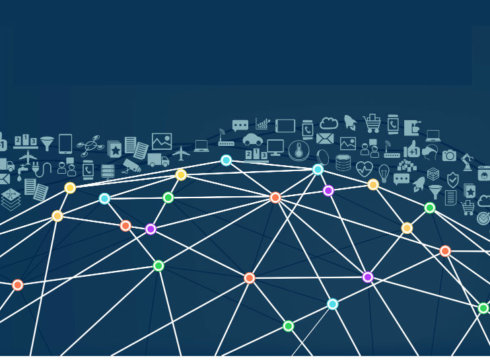Inc42 Daily Brief
Stay Ahead With Daily News & Analysis on India’s Tech & Startup Economy
We have known the Internet to connect people and enable them to share information, mainly in the form of text, photographs and videos. Now, it has evolved to connecting physical objects as well.
Devices other than standard products, such as smartphones and computers, when connected to the Internet comprise the Internet of Things (IoT). Generally, the ‘things’ can be addressed uniquely, using a uniform resource identifier or an IP address. The objects can transmit data to each other and even perform physical acts using sensors. For example, a smart thermostat enables you to change the temperature of your house even when you are away and receive alerts when something goes wrong with your cooling or heating system.
Leading technology research and advisory company Gartner predicts that there will be nearly 21 Bn connected things all over the world by the year 2020. The number has been put at 30 Bn by ABI Research.
Therefore, the IoT has the potential to cause major disruption in a variety of fields. It has already had a considerable impact in areas such as customer service and healthcare. As schools also become part of this evolution, the Internet of Things is likely to bring significant changes to the education sector as well.
Implications Of The Use Of IoT In Education
Despite the proliferation of technology, mainly in the form of mobile devices, most educational institutions are yet to incorporate it actively into learning. Most institutions have not yet reached out and connected to each other, and few teachers share data among themselves, except perhaps for research projects. Adoption of technology at a massive scale is needed for the potential of the Internet of Things to be realised fully and for engagement to move beyond the classroom for more authentic and relevant learning.
Moving beyond online tutorials and virtual classrooms, educational technology is progressing towards greater transformation with the help of the Internet of Things. The following are a few examples:
Connecting Learners Worldwide
Interactive boards and digital highlighters are among the latest devices related to the IoT in the field of education. The boards can accelerate and simplify the learning experience by receiving, acknowledging and reciprocating information. Similarly, digital scanners aid the learning experience by digitally transferring text to smartphones. Therefore, using these devices, students sitting in their classrooms can interact with educators, mentors and peers across the world.
Research
Radio-frequency identification (RFID) chips can be used to tag as well as track physical objects or even animals and birds round the clock, irrespective of weather or other conditions. Cloud-based applications can then be used to initiate analysis of data automatically.
In this way, students gain real-time insights into subjects they would otherwise have only read about in their textbooks and gain a richer learning experience.
Supplementing Textbooks
These days many textbooks have QR codes. Students can scan these codes using their smartphones to access additional knowledge resources, in addition to assignments and feedback.
Helping Students With Special Needs
For instance, students with impaired vision can be given special cards that are detected automatically and lead to enlargement of font each time they use computers. The student need not ask a teacher for help every time, and this would help promote independence and build self confidence.
Improving Campus Safety
Digitised wrist bands and identity cards enable schools to track students, staff and visitors. Data on the last-known locations are stored on a server and it helps ensure that every area on campus is accessed only by the right people. These also enable cashless payments, by also acting as digital wallets, which can discourage theft and bullying.
Tracking of bus routes is enabled by a GPS-enabled bus system so that students have a safe journey to and back from school and parents are aware of the children’s whereabouts.
Increasing efficiency
Streamlining the day-to-day operations of schools using IoT helps focus more on actual teaching activities by cutting down on the time and effort required in manual accomplishments of those. For example, connected devices that automatically detect the presence of students in the school can eliminate the need for taking attendance manually and submitting the information at a central office, among other time-consuming activities. The whereabouts of lab equipment, projectors and other such resources can be tracked using RFID technology for greater efficiency. IoT can also help reduce energy costs for schools by closely monitoring the energy usage.
Thus, the Internet of Things is transforming the education sector and making learning simpler, faster and safer.
Note: We at Inc42 take our ethics very seriously. More information about it can be found here.


